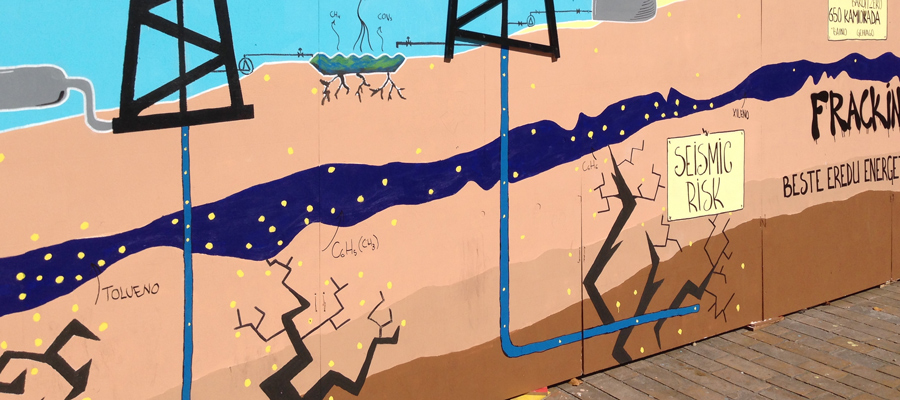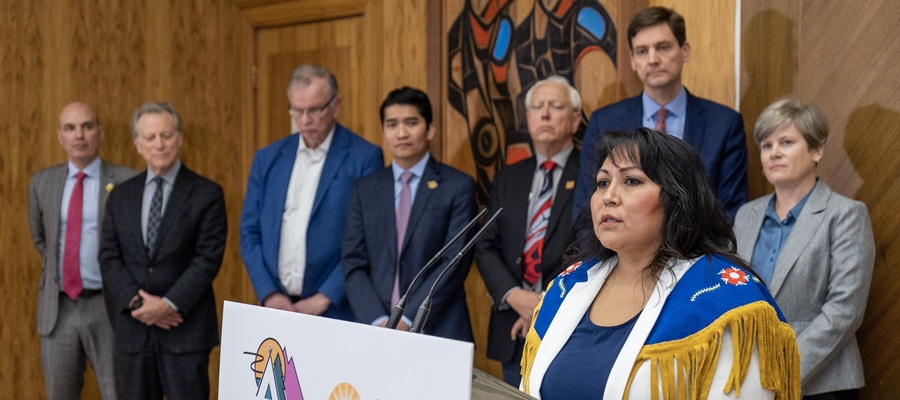Memo to northeast BC: More fracking earthquakes ahead

Of the many “unknowns” flagged in a recent science panel report, few are as disturbing as the finding that no one can say how destructive an earthquake may one day be triggered during brute-force oil and gas industry fracking operations.
The panel’s report—commissioned by Michelle Mungall, BC’s Minister of Energy, Mines and Petroleum Resources—has landed at an awkward time for the current government, which like the government before it, is all-in on liquefied natural gas (LNG).
If big LNG plants that the government is heavily invested in subsidizing ever materialize, the natural gas needed to supply them will be enormous. Tens of thousands of new gas wells will have to be drilled and fracked in northeast BC, our province’s industrial sacrifice zone. More earthquakes will be generated and it will likely be impossible to predict their force.
Wherever the oil and gas industry pumps large volumes of water, sand and chemicals underground to “liberate” natural gas during fracking, earthquakes commonly occur.
In late November, a 4.5 magnitude earthquake shook residents’ homes from the community of Charlie Lake to Pouce Coupe, 100 kilometres away. It shook the ground so forcefully at the Site C dam construction site near Fort St. John, northeast BC’s largest city, that a conference call was hastily convened between BC Hydro officials and provincial Oil and Gas Commission (OGC) staff.
The call confirmed that two natural gas wells fracked by Canadian Natural Resources Limited triggered the earthquake. Nearly five months later, fracking operations at those well sites remain suspended.
For residents in rural Farmington, it was the latest stark reminder of what life in a fracking zone is all about. “Felt events”—the OGC’s euphemistic language for fracking-induced earthquakes that rattle homes—are increasing as they are the world over. Wherever the oil and gas industry pumps large volumes of water, sand and chemicals underground to “liberate” natural gas during fracking, earthquakes commonly occur.
A horrible question to contemplate—but one that must be asked in light of that big “unknown” flagged by the science panel—is what happens if and when fracking triggers a far larger earthquake?
We know that late last year a 5.7 magnitude earthquake, which scientists later linked to fracking, was triggered in China. That is 63 times stronger than last November’s event in BC. People have already died in earthquakes in China triggered by fracking so it could happen here and it’s entirely possible that an even more powerful tremor could be triggered.
It’s no surprise, then, that BC Hydro has secured the OGC’s agreement to push back fracking operations from near its massive Peace River dams, one of which—the Peace Canyon dam— sits on top of thrust faults that could be activated during an earthquake. Homeowners in the region, however, have no such protections.
Every day that the provincial government allows fracking to continue is another day it tells northern residents that induced earthquakes of “unknown” destructive force are an acceptable cost of doing business in BC.
Currently, the only protocol for dealing with such events is to shut down fracking operations once earthquakes begin. But that does nothing to prevent earthquakes from being triggered in the first place.
Unless the government changes course, it is a given there will be a lot more shaking going on. Currently, the only protocol for dealing with such events is to shut down fracking operations once earthquakes begin. But that does nothing to prevent earthquakes from being triggered in the first place.
The current government, like governments before it, has heaped human health and safety risks and environmental degradation on northeast BC residents with impunity. But there have been few if any political consequences for doing so, because while northeast BC is roughly the size of England, it is sparsely populated and has only two provincial electoral ridings.
One is left to wonder whether they could get away with rolling the dice if by some geological fluke our province’s fossil fuel resources were in the populous south instead of the remote north and the walls were shaking inside—let’s say—Vancouver elementary schools.
—
This piece originally appeared in The Province.
Topics: Environment, resources & sustainability, Fracking & LNG, Transparency & accountability

